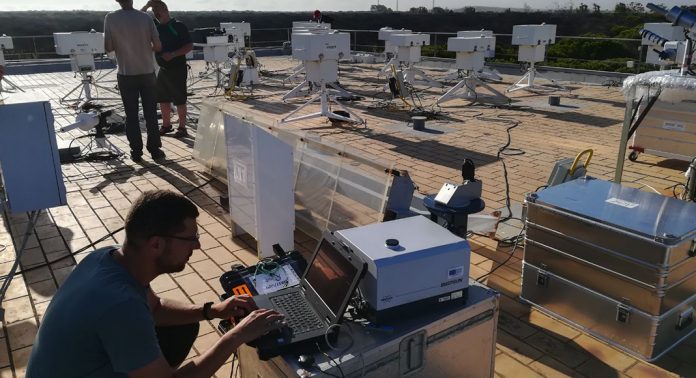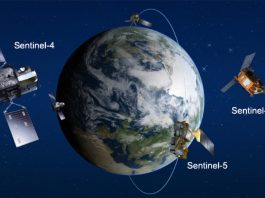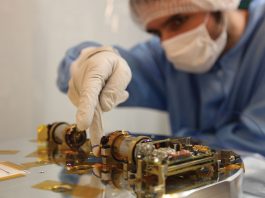Dr Stoyka Netcheva, Scientific Officer at World Meteorological Organization’s Global Atmosphere Watch Programme (GAW), explains how meteorological research has evolved and illustrates how GAW provides reliable scientific information for policymakers and supports international conventions.
The roots of the ozone observations of the Global Atmosphere Watch Programme (GAW) of the World Meteorological Organization (WMO) precede the formation of WMO itself. Since the beginning of the last century, the meteorological community had been looking at ways to improve meteorological research and Numerical Weather Prediction (NWP) models. In the 1920s, the scientific community started to systematically look at the ozone as a useful tracer for the stratospheric motion.
Professor Gordon Dobson designed the first ozone measuring instrument known as a ‘Dobson spectrophotometer’ and applied it for the first ozone observations in 1924. The units to express total ozone content are also named after Dobson: Dobson units. Shortly after that, in 1926 Dobson observations commenced at the Swiss Alpine site Arosa, making it the site with the longest continuous ozone data series ever made. Not long after, in 1933, the Committee on Ozone was formed within the International Association of Meteorology, with the main objective being to promote the exchange of scientific results. The Committee was renamed as an ‘International Ozone Commission’ (IO3C) in 1948.
What is IO3C?
IO3C represents a community of global researches who study the chemistry and dynamics of the ozone layer and who collectively consider the priorities in this area of research. It is independent of any particular organisation or individual institution.
In the 1950s, WMO launched a programme on atmospheric chemistry and the meteorological aspects to support the systematic observations of atmospheric chemical composition relevant to weather and climate prediction. Such systematic observations have the best value if all relevant measurements are expressed in the same units or on the same scale, and when those measurements are comparable at all different measurement sites and locations. This concept transformed the early sporadic measurements into systematic global ozone observations and stimulated the establishment of the Global Ozone Observing System (GO3OS) during the International Geophysical Year (IGY) of 1957-58.
The GO3OS programme co-ordinated measurements of total atmospheric ozone by the Dobson spectrophotometer network and supported comparisons of the vertical distribution of ozone deducted from the Dobson measurements with the direct measurements by ozone-sondes. To ensure the international data exchange, the Ozone Data Centre (now the World Ozone and UV Radiation Data Centre (WOUDC), see: https://woudc.org/home.php) was created in Toronto, Canada in 1960. GO3OS was latter integrated with the network for measuring precipitation chemistry, aerosol and carbon dioxide (Background Air Pollution Monitoring Network) and formed the current GAW Programme.
The GAW Programme
The GAW Programme focuses on building a single co-ordinated global understanding of atmospheric composition and related physical parameters (e.g. UV radiation), and their spatial and temporal changes. GAW co-ordinates high-quality observations across global to local scales to drive high-quality and impact science while co-producing a new generation of research enabled products and services.
About 100 countries are participating in the GAW Programme, with 250 stations reporting ozone observations and a similar number of UV-reporting stations in 2019. The ozone and UV Radiation parts of the GAW programme presently consists of several connected components including:
- Observational infrastructure (measurement stations and centres performing quality assurance activities);
- Data management (World Data Center);
- Scientific guidance (ozone and UV Scientific Advisory Group (SAG)); and
- WMO Secretariat support.
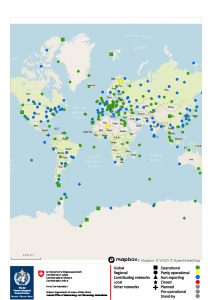
Instrumentation
The instruments utilised by the network require careful handling, including regular calibration to reach high accuracy (to ensure compatibility among different instruments) and high precision (to allow detecting spatial and temporal gradients and trends). Those requirements are incorporated into the GAW Quality Assurance Framework, for which the main objective is to ensure that the data deposited in the data centers are consistent, meet the WMO/GAW data quality objectives (see: https://library.wmo.int/doc_num.php?explnum_id=3074), and are supported by comprehensive description of the methodology.
Data quality objectives are regularly reviewed by the expert community and revisions are published as GAW Reports. To reach high quality of data, the programme makes recommendations on standardised observational techniques, on ways to maintain traceability, on the use of the primary references, and metadata.
The quality of the ozone and UV network observations is ensured through GAW World Calibration Centres and Regional Calibration Centres. Their main tasks are to link observations to world reference standard and to ensure network comparability and compatibility through ‘intercomparison’ campaigns and regular audits.
Dobson and Brewer instruments, which are the backbone of the GAW column ozone observing network, are UV spectrophotometers recording the light from either the sun or the zenith sky. GAW ozone column observations are complemented by measurements of ozone vertical distribution in the atmosphere up to an altitude of about 30-35 km by small, lightweight and compact balloon-borne instruments known as ‘ozonesondes’.
A wide range of UV radiation measuring instruments is available at present and includes spectroradiometers, array spectroradiometers, broadband UV, and multichannel narrowband instruments and dosimeters. All GAW partners are required to set up their ozone and UV measurement systems in a way that they are regularly maintained, serviced, calibrated, and quality controlled. High quality observations are critical for developing ozone and UV climatology and an analysis of trends when uncertainties in measurements substantially impacts the quality of the final product. Multiple activities guided by the SAG contribute to advances in the quality of data and include regular training events, workshops, inter-comparison campaigns, calibrations station visits, and twinning – where new and established stations or laboratories are paired to fast-track the development of observation capability under the leadership of GAW.
The alignment of observational requirements and the capacity of the observation network are continuously evaluated to enhance the provision of services and to better meet policy, scientific, and societal needs. Ground-based observations serve as a reference for the establishment of traceability and ensuring the consistency of satellite data. Long-term ozone observations help to ensure the seamless transition among different satellite missions. Because of its robust quality assurance and long-term observations approach, the total ozone and profile ozone measurements co-ordinated by GAW are recognised as a reference and baseline by the Global Climate Observing System (GCOS).
The GAW Programme, the SPARC project of the Word Climate Research Programme, and IO3Cwork together to improve understanding of ozone trends, advance knowledge of the ozone layer dynamics and chemistry, and prepare predictions and projections of the ozone layer state (see: www.sparc-climate.org/publications/sparc-reports/sparc-report-no-9).
Observational data from the GAW network are used in near-real time to support several applications, including the creation and dissemination of near real-time ozone maps by several institutions and the Antarctic ozone bulletins. Regarding the latter, the near real-time observations from GAW Antarctic stations are combined with satellite observations and model outputs.
Quadrennial Scientific Assessments of Ozone Depletion
The work on the stratospheric ozone and UV is conducted in close partnership with United Nations Environment Programme (UNEP). The main focus of this collaboration is the preparation and publication of the Quadrennial Scientific Assessments of Ozone Depletion (see: www.esrl.noaa.gov/csd/assessments/ozone).
The Assessment provides scientific information to the Vienna Convention (VC) and the Montreal Protocol (MP) on the current knowledge of the state and the changes of the ozone layer and thus serves to assist them in making informed decisions on measures to protect the ozone layer. It involves contributions from hundreds of scientists around the globe who are working on issues related to ozone. The assessment represents the most authoritative overview of the state of atmosphere with respect to stratospheric ozone, ozone depleting gases, and ultraviolet radiation, added the links with the climate, and makes extensive use of the data from all ozone and UV GAW Programme observing stations.
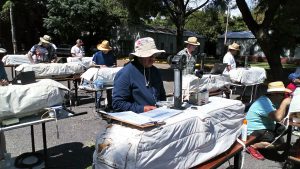
Ozone layer recovery
The latest Scientific Assessment (2018) concluded that because of the actions taken under the MP resulting in decreases in the atmospheric abundance of controlled ozone-depleting substances, the ozone layer has recovered at a rate of 1-3% per decade since 2000 in upper stratosphere regions outside the poles. With the projected recovery rates proposed by the Assessment, the Northern Hemisphere mid-latitude total column ozone is expected to recover by the 2030s, followed by the Southern Hemisphere mid-latitude ozone around mid-century. The Antarctic ozone hole is expected to gradually close, with springtime total column ozone returning to 1980 values in the 2060s.
Ozone is linked with the climate directly by absorbing solar radiation and contributing in this way to the atmospheric energy balance, and indirectly through the impact of the ozone-depleting substances and their substitutes on energy distribution as greenhouse gases. Because of those connections, the adoption of the Kigali Amendment (2016) to the MP which enforced the phasing-down of the powerful greenhouse gases hydrofluorocarbons (HFCs), used as replacements of hydrochlorofluorocarbons (HCFCs) and chlorofluorocarbons (CFCs), the world can avoid up to 0.4°C of Global warming this century.
The second aspect of GAW and UNEP collaboration is the work under MP on the organization of the Ozone Research Managers meetings to review and provide recommendations on observations, research, data stewardship, and capacity development to the Parties of the protocol. Particular attention had been paid to identifying the observational gaps and to supporting capacity-building for ozone monitoring and research in developing countries and countries with economies in transition to ensure that they can meet their commitments anchored in the VC and MP. In this context, GAW co-ordinates the relocation and refurbishing of instruments to the countries where gaps were identified from stations that ceased operation, as well as the training of local personnel in operational and calibration procedures. GAW relentlessly works towards engaging new partners and expanding collaborations, harmonising data, improving their discoverability, accessibility and applicability.
Halons and CFCs
Following the success of the Montreal Protocol, the use of halons and CFCs has been reported as discontinued but their levels in the atmosphere have been continuously measured at a limited number of the stations. These measurements are used to understand the potential evolution of the ozone layer and also to capture any unexpected changes in the atmospheric levels of those constituents.
Observations of the ozone depleting substances are co-ordinated in the GAW Programme under the group of greenhouse gases. Analysis of the CFC-11 long-term and quality-controlled observations indicated a slowdown in the decline of the atmospheric concentration after 2012, connecting it to an increase in global emissions from eastern Asia. Even if there were no new emissions, there is more than enough chlorine and bromine present in the atmosphere to cause the complete destruction of ozone at certain altitudes in Antarctica from August to December, and so the formation of the ozone hole is still expected to be an annual spring event while the variation of its size and depth are governed to a large degree by the meteorological conditions specific for the year.
Specific dynamic conditions in the stratosphere in 2019 led to one of the smallest and earliest closing ozone holes in the Antarctic, while the combination of unusually weak upper atmospheric waves with strong stratospheric polar vortex and consistently very low temperatures for a long period of time over the Arctic spring in 2020 resulted in the record low ozone levels over the Arctic.
Summertime UV radiation levels
The depletion of ozone in the Polar regions affects the ozone budget across the globe and can result in an increase of summertime UV radiation levels overpopulated areas. Long-term effect studies have demonstrated that exposure to the sun and other sources of ultraviolet radiation (UVR) without sufficient protection would damage plant DNA and harm humans and animals by causing cataracts, skin cancer, suppressed immune systems, and disruption to the reproduction of some animals.
Due to links between UV Radiation levels and human and ecosystem health and material damage, the GAW Programme addresses observations of the UV radiation, establishes a UV climatology, and works towards the quantification of future changes of UV radiation levels to support health communities and the general public. Such information assisted in the establishment of the policies for the ozone layer protection. GAW played an active role in advancing the modelling of the radiative transfer of UV radiation, making possible the development of satellite-based methodologies to estimate UV irradiance at the Earth’s surface.
Satellite observations
Satellite observations offer global daily coverage of the UV radiation field and it is a useful tool in supporting environmental assessments and for delivering information for the public, for example in the form of the UV index and advisories. Those observations are supplemented by GAW ground-based measurements which have higher resolution in terms of space and time. The two sets of data showed that both sets are complementary, and while satellites are good for deriving climatologies and seasonal variability analysis, the production of location-specific information on the basis of the satellite measurements remains an issue, as such retrievals are impacted by aerosols, clouds, and snow.
Currently, the focus of UV radiation research is on building climatology and assessing UV variations in relations to cloud cover and types, earth reflectivity (albedo), aerosol load, and other parameters related to global change. Variations in the aforementioned parameters can lead to spectral, geographical, and seasonal changes in solar radiation reaching the Earth’s surface, which in turn results in both beneficial and detrimental changes in the effects of UV radiation on living organisms and causes diverse socio-economic consequences.
Public health
The GAW Programme collaborates with other programmes and agencies to produce documents related to public health and an awareness of the UV radiation levels and impacts. An important achievement has been a development of the UV Index (UVI) public information jointly with the World Health Organization, UNEP and the International Commission on Non-Ionizing Radiation Protection (see: www.who.int/uv/intersunprogramme/activities/uv_index/en). In addition, the GAW SAG has established a public site where the UV index of anywhere in the world can be checked. Another example of collaboration is the rationalising of nomenclatures for different UV doses, which was jointly developed with the International Commission on Illumination (CIE).
The activities listed above clearly demonstrate how the GAW Programme provides reliable scientific information for policymakers and supports international conventions by assessing compliance and effectiveness and by identifying and filling in observational and policy needs. In addition, GAW contributes to improving the understanding of many atmospheric processes and their links with climate, and facilitates the development and delivery of impactful products and services.
Dr Stoyka Netcheva
Scientific Officer
Global Atmosphere Watch Programme
World Meteorological Organization
+ 41 (0) 22 730 82 35
SNetcheva@wmo.int
Tweet @WMO
https://public.wmo.int/en/programmes/global-atmosphere-watch-programme
Please note, this article will also appear in the second edition of our new quarterly publication.

